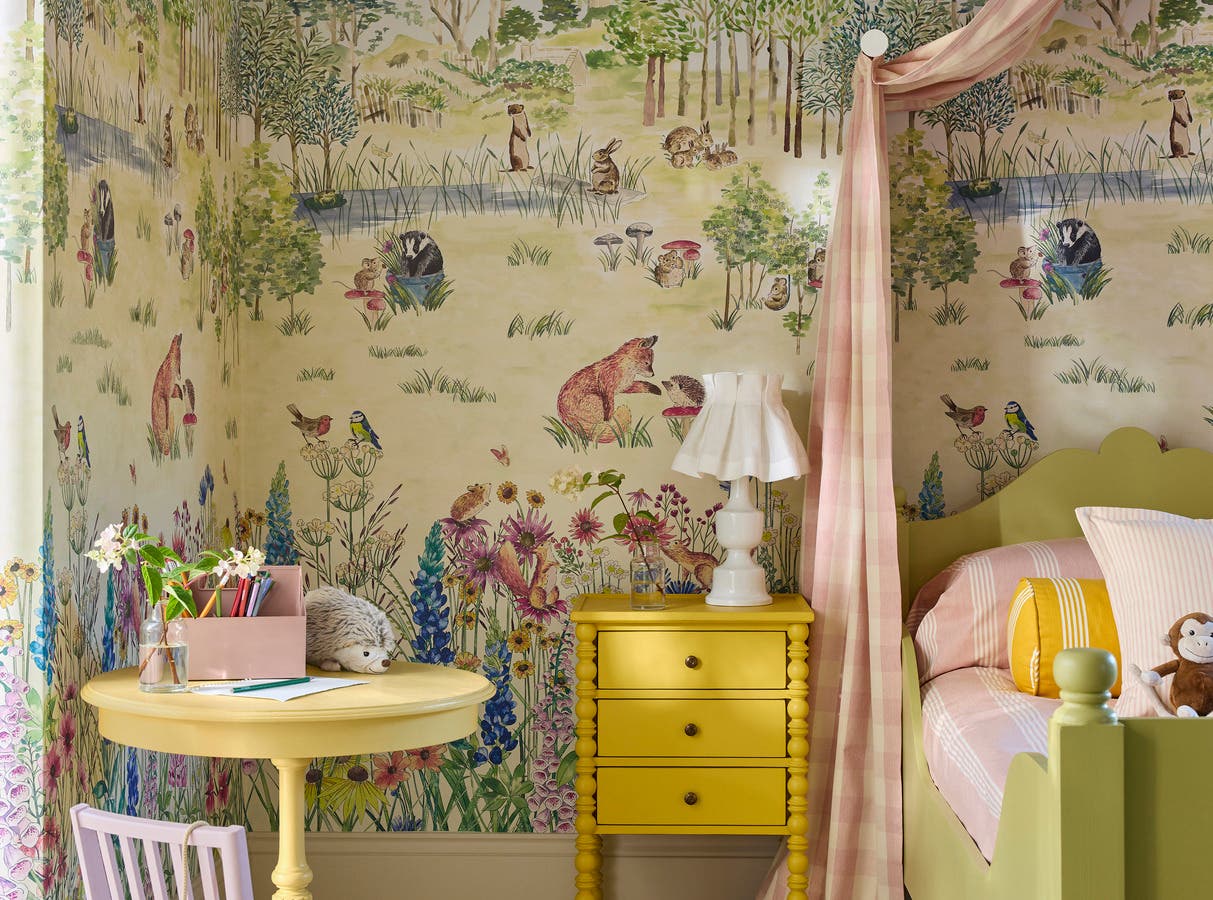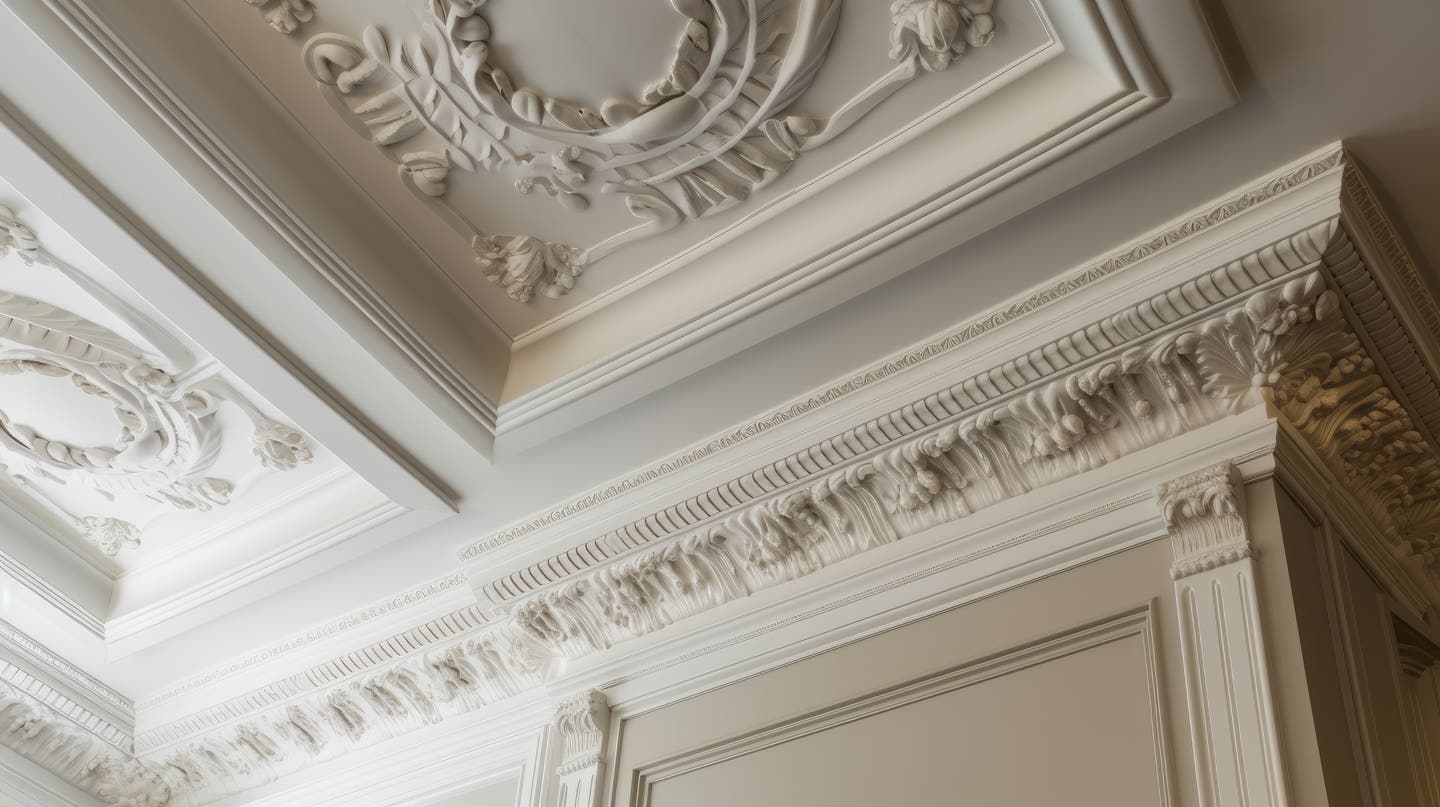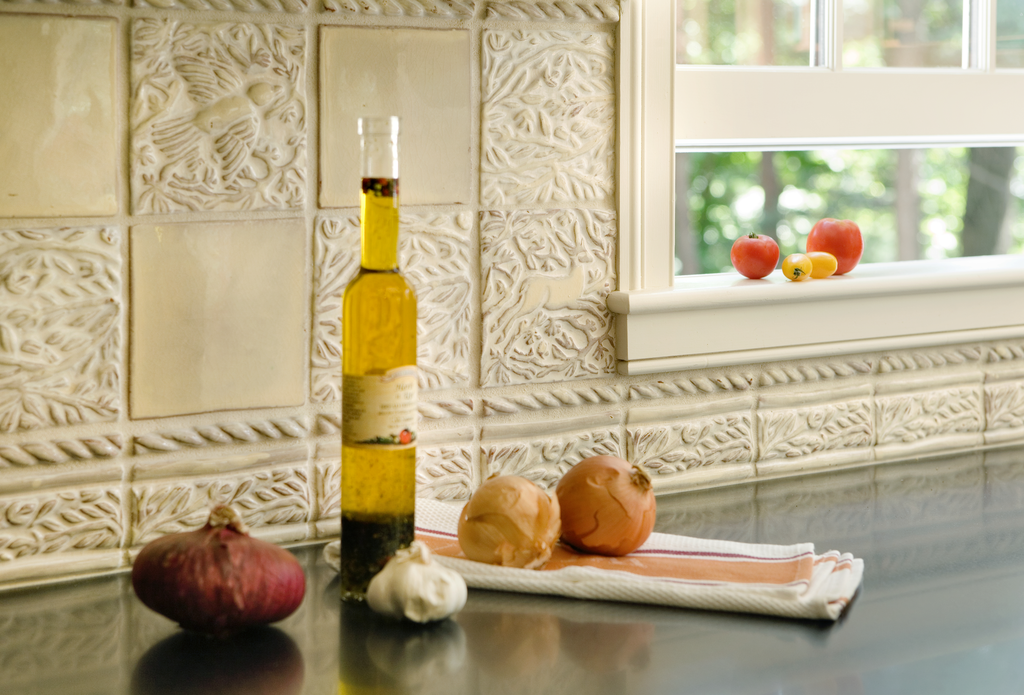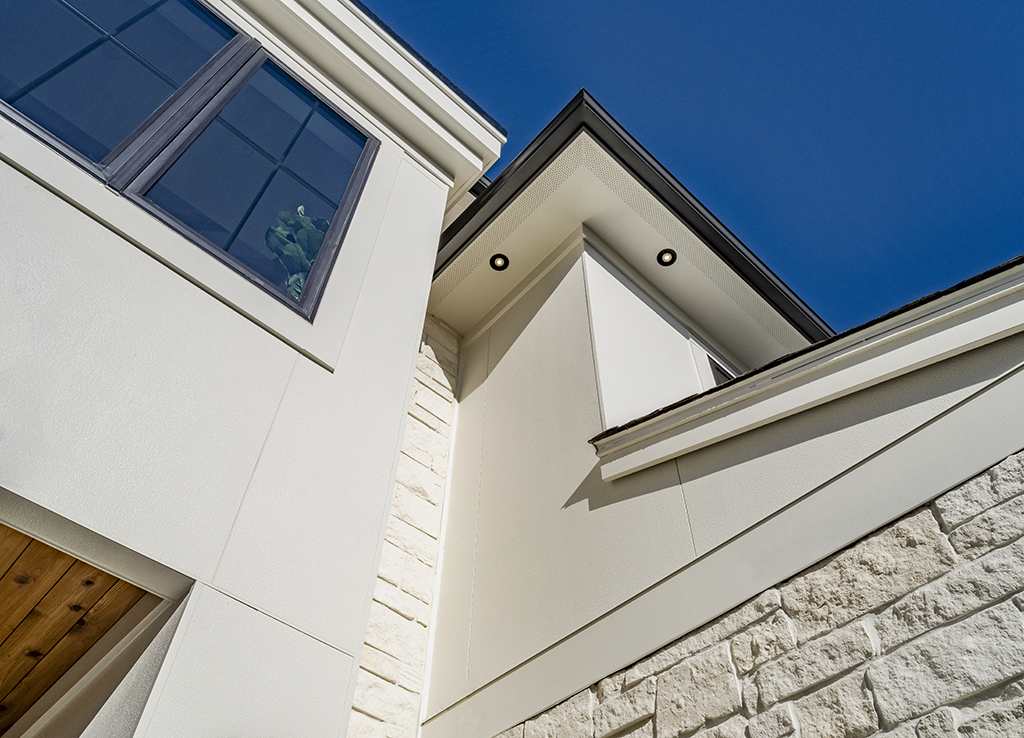
Product Reports
Gas Lighting: A Radiant History
Is it for historical accuracy or a sense of romance that some homeowners choose gas over electric lighting fixtures? According to two gas-lighting fabricators, both contribute to gas lighting’s popularity. “People are nostalgic for a bygone era,” says Lars Dahlhaus, president of Dahlhaus Lighting, Inc., of Brooklyn, NY. “And gas fixtures add a lot of charm.” Drew Bevolo, owner and president of New Orleans, LA-based Bevolo Gas & Electric Lights agrees: “My customers like the ambiance of gas lighting.”

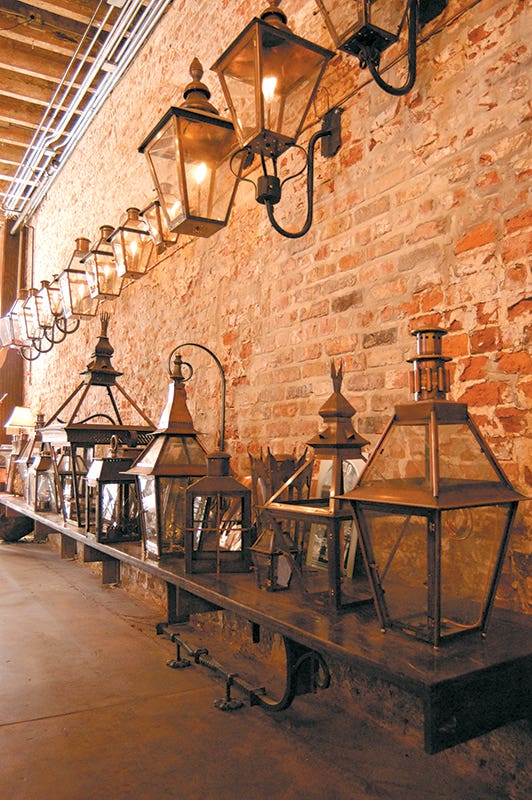
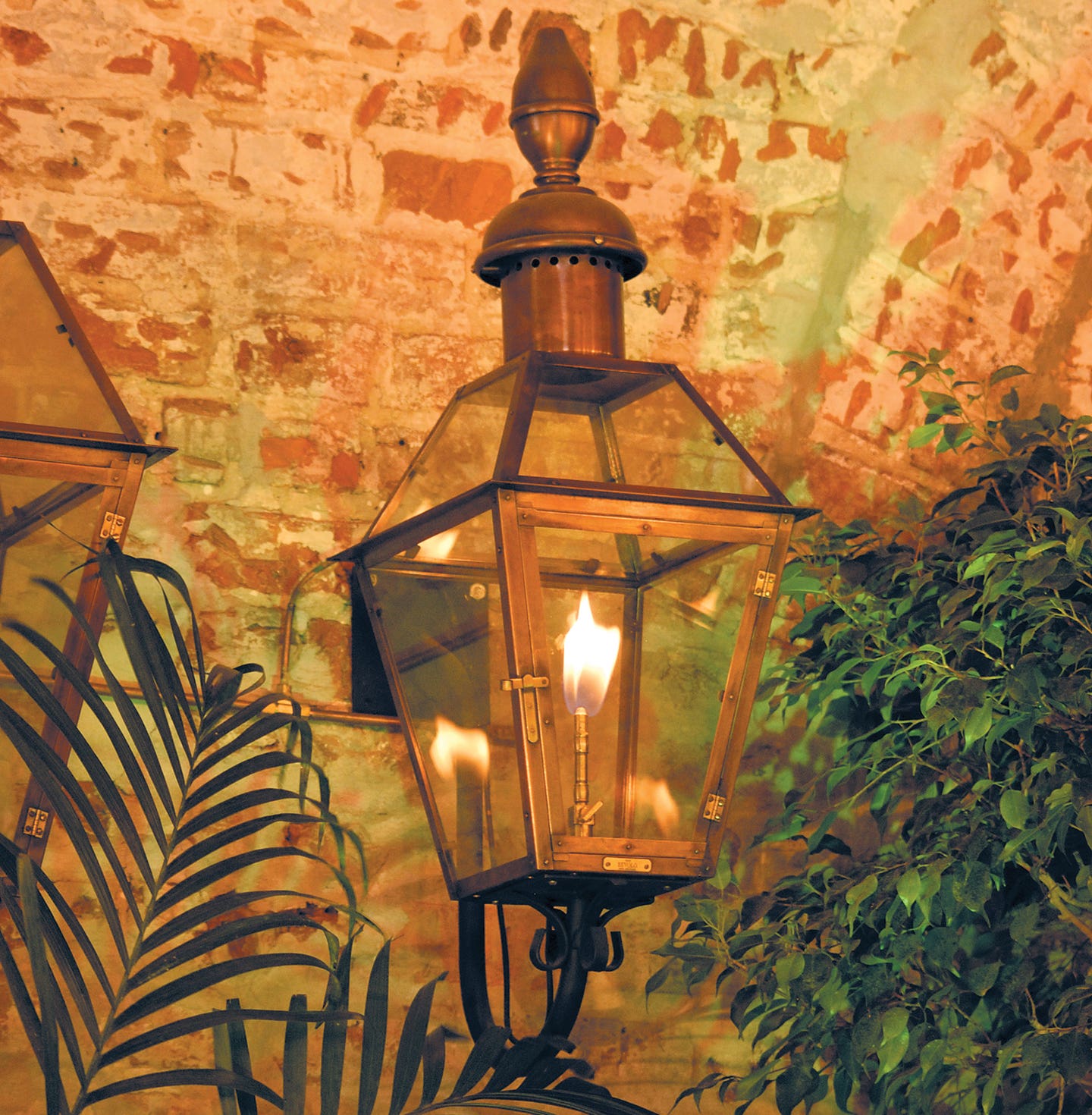

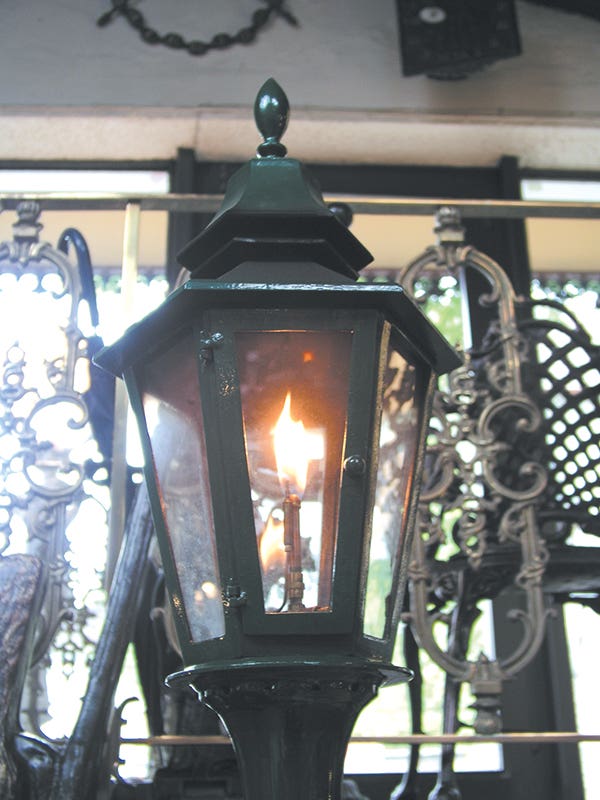
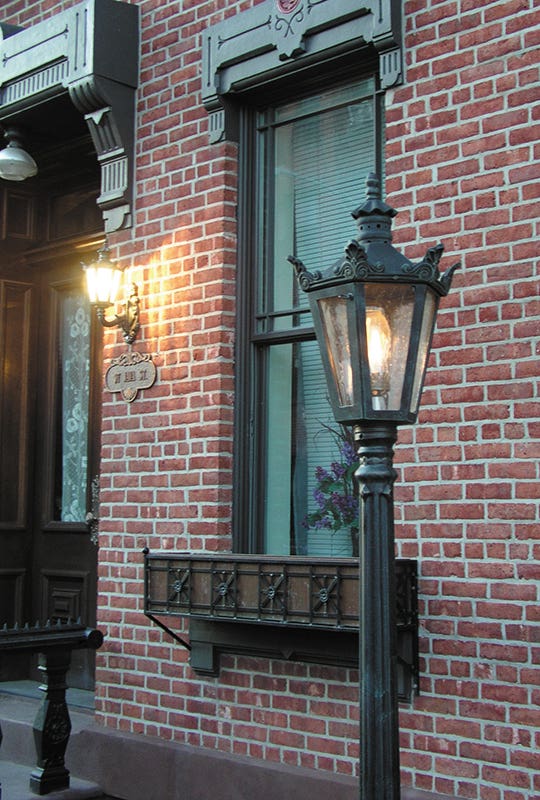
Before electric lighting became widespread and economical in the 1890s, gas was the most popular means of illumination. Gas-light technology was developed in England a century earlier and first used to light a public street in London in 1807. It spread to other countries over the next ten years or so; in 1816, Baltimore was the first city in the United States to light its streets with gas. Homeowners, too, used gas lighting in their residences, both in the interior and in their landscaping designs.
Just as some cities continue to use or revert to using gas street lighting – a number of neighborhoods in Cincinnati, OH, and streets in London and Berlin – gas lighting has become more prevalent in residential applications. Two companies from different regions of the U.S. share their knowledge of the field and provide insight to aid in the selection of appropriate lighting for residential projects.
Specifying Gas Lighting Fixtures
When specifying a light fixture, its application should be the first consideration. Gas lighting is best utilized as ambient or mood lighting and not as task or utility lighting. A mantel-based light burns the brightest, roughly equal to a 60-watt incandescent bulb, while an open flame is equivalent to a 25-watt lightbulb. Lighting fabricators recommend gas lighting for a home’s entrance – to the sides of the door – or on the pillars of a driveway. Bevolo Gas & Electric also supplies interior fixtures, which customers often install in foyers, kitchens or great rooms.
Other factors are the type of gas and the cost of the fixtures. As for gas, there two options: propane, a byproduct of petroleum refining, and natural gas, a fossil fuel composed almost entirely of methane. Propane produces about 3,000 BTUs per gallon and natural gas produces about 1,700-1,900 BTUs per gallon. Depending on which one the customer chooses, the burner setup differs slightly.
Gas prices are of little consideration: The installation of natural gas is costlier, but natural gas is cheaper than propane (according to the 2017 Clean Cities Alternative Fuel Price Report, the average cost of natural gas in the U.S. was $2.15 per gasoline gallon equivalent, while the same amount of propane cost $2.83). “The expenditure also depends on the efficiency of the burners,” Bevolo adds. “It costs our clients about $10 per month per fixture to burn. An electric fixture that uses two bulbs per year is approximately the same price.”
Dahlhaus notes that because gas prices in Europe are higher than those in the U.S., gas lighting is, for the most part, a U.S. phenomenon. “In Europe, almost no one chooses gas lights over electric ones because of the cost,” he says. “Most of our gas-light market is in the States.”
The price of the fixtures themselves ranges widely. Bevolo Gas & Electric offers a number of models in the $200 range, but the lighting could be as pricey as $5,000. A wall-mount fixture from Dahlhaus Lighting can cost between $1,000 and $2,000, and a pole fixture is often $1,500 to $2,500. Because all of its work is custom, Dahlhaus Lighting’s gas lighting can be as little or as much as you can afford; the company once created a three-crown gas fixture that carried a price tag of about $6,000.
European Traditional Gas Lighting
Dahlhaus Lighting is a family business that was established more than 40 years ago in Ennepetal, Germany. While the manufacturing is still concentrated in Europe, the company has a showroom in Brooklyn, which opened about ten years ago. “My parents founded the business,” says Dahlhaus. “Now my brother runs the shop with them in Germany while I run the showroom in New York.”
Products from Dahlhaus Lighting include bollards, signs, mailboxes and garden furniture, but lighting makes up the majority of its business. “Our line began with a simple period-style carriage light that we found in England,” Dahlhaus recalls. “Our entire collection is made up of replications of period designs and castings from all across Europe.”
Exterior gas lighting makes up only about five to ten percent of Dahlhaus Lighting’s business. “We entered the gas-lighting market about five years ago due to surprising demand,” says Dahlhaus. “We decided to convert some of our electric lights into gas, which was relatively easy because our original designs were gas in the first place. They still had chimneys, so were somewhat easy to convert.”
Customers can choose from Dahlhaus Lighting’s seven lines of gas lighting. Each includes wall- and post-mounted models in a variety of sizes. The most popular models, says Dahlhaus, are the Berlin Landhaus and Berlin City, two styles from the Berlin series. “The city of Berlin stopped manufacturing the lights and gave us the design,” says Dahlhaus. “It has also been used in other cities before and since then. To adapt the design for residences, we produce a smaller version.”
Dahlhaus Lighting’s gas-lighting collection is fabricated from sand-cast aluminum, which Dahlhaus explains is extremely durable. “It won’t crack from the heat and also holds the paint very well,” he says. Dahlhaus Lighting offers 12 different colors as well as custom colors. All of its gas fixtures use UL-certified parts.
French Quarter Creation
Bevolo Gas & Electric is another family-owned lighting company. It has showrooms around the U.S. and in 28 countries. Drew Bevolo represents the third generation of the family-owned business. “My grandfather began manufacturing traditional and antique lighting 62 years ago, in 1945,” he says. “An immigrant from Italy to New Orleans, he built ships for the Navy during World War II. When the war ended, he started a metalwork company, which produced gas and electric lighting and metal accessories such as pot racks.”
Bevolo Gas & Electric fabricates the full line of its historic products as well as new collections. “We now have 500 different designs of lighting alone, all of which are traditionally styled,” says Bevolo. “They are a combination of our own creations and contributions from architects.” For the former, Bevolo Gas & Electric draws inspiration from historic Spanish, Italian and French models. Based on architectural plans, the company also provides scale and style recommendations.
Its most popular gas light is the French Quarter model. “The original French Quarter streetlights were designed by my grandfather in collaboration with A. Hayes Town, the father of Louisiana architecture,” says Bevolo. “This design is the nucleus and trademark of our business.” Other models include London Street, Williamsburg, Royal Sonesta and Napoleon House.
The company has supplied custom lighting for such distinguished properties as Monticello and the University of Virginia. As for residences, many French Quarter homes and U.S. Historic Register properties have bought gas lighting from Bevolo Gas & Electric. “People primarily ask for gas lighting,” says Bevolo, “but in the end, the ratio of gas to electric lighting fixtures that we sell is about 50-50.”
Heavy-gauge antique copper and brass are the materials of choice; the brackets are made of flat iron. A selection of traditional finishes are available. “We apply timeless finishes,” says Bevolo, “and not trendy ones that will fall out of style.”
What differentiates Bevolo Gas & Electric’s gas fixtures from the products of other lighting companies are its construction techniques. Bevolo’s grandfather incorporated aviation technology – hand-riveting instead of soldering the metal. “In the 1940s, customers brought coal gas-burning streetlights that they had recovered from war-torn London into the shop for repair,” says Bevolo. “My grandfather was not able to repair the lights in the traditional method, because they were oxidized and old. They were too thin to resolder, so he hand-riveted them together.” The fixtures can be brighter and will last longer, because, while heat melts soldered metal over time, it won’t damage or patina Bevolo Gas & Electric’s lights. Bevolo says that though it is a very labor-intensive process, “we still use that method to maintain the integrity of our craft.”
It appears that Bevolo Gas & Electric will be around another 62 years or more: “My son – the fourth generation – just joined me,” says Bevolo.
Servicing Gas Lighting Fixtures
Both Dahlhaus Lighting and Bevolo Gas & Electric offer gas-lighting models that need to be cared for differently. Dahlhaus Lighting’s collection, for instance, needs to be switched on manually and to be cleaned regularly. “One has to physically go to the fixture and ignite the light,” says Dahlhaus. “Some people don’t consider what that can entail; sometimes it means climbing a ladder to reach a 6-ft.-tall post-mounted lantern.”
Lighting from Bevolo Gas & Electric, on the other hand, is virtually maintenance free. For exterior lights, the company developed a baffling system, an internal pyrex glass that keeps the flame from blowing out. For safety reasons, all of Dahlhaus Lighting’s fixtures have automatic gas shutoff valves in case the flame has been blown out.
Both companies offer lifetime warranties on their lights. “We want to pursue excellence and improve upon our products every year,” says Bevolo. The company also makes electric igniters for its interior lights, which it has a patent on.
Weather the interest in gas lighting is replicating historic fixtures or creating ambience, it is best to understand the market and to know the available options. Bevolo Gas & Electric and Dahlhaus Lighting are two companies with which to start.



